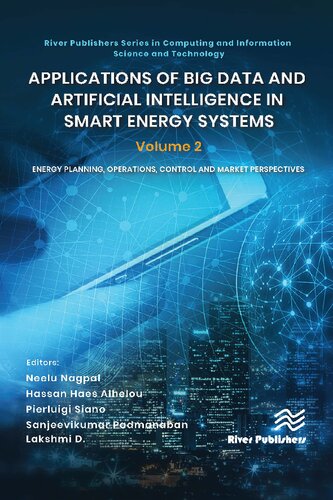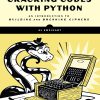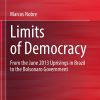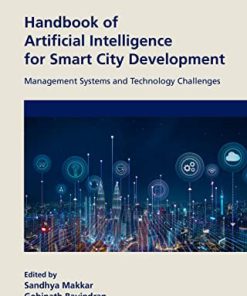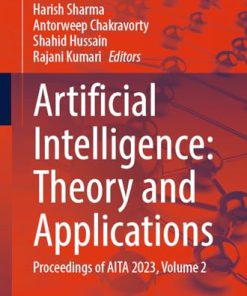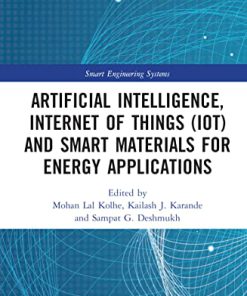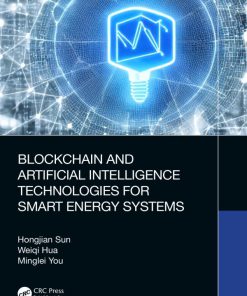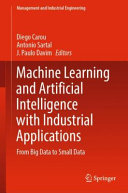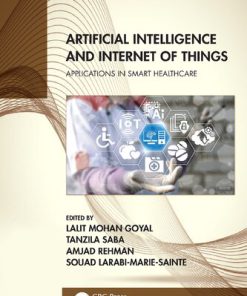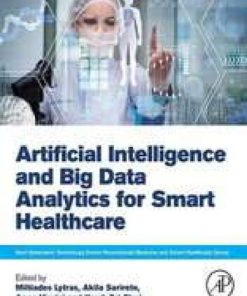Applications of Big Data and Artificial Intelligence in Smart Energy Systems: Volume 2 1st Edition by Neelu 9781000964011 1000964019
$50.00 Original price was: $50.00.$25.00Current price is: $25.00.
Applications of Big Data and Artificial Intelligence in Smart Energy Systems: Volume 2 1st Edition Neelu Nagpal (Editor) – Ebook Instant Download/Delivery ISBN(s): 9781000964011, 1000964019
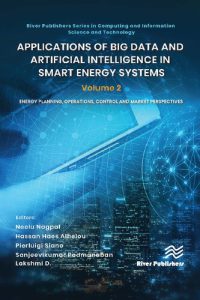
Product details:
- ISBN 10:1000964019
- ISBN 13:9781000964011
- Author: Neelu
Applications of Big Data and Artificial Intelligence in Smart Energy Systems
Volume 2 Energy Planning, Operations, Control and Market Perspectives
Table contents:
Preface
List of Figures
List of Tables
List of Contributors
Abbreviations
1 Innovation, Opportunities, and Ongoing Challenges of AI and IOE in the Power and Energy Sector
1.1 Introduction
1.2 Recent Advances in Smart Energy Industry’s Adoption of Artificial Intelligence
1.3 Internet of Energy (IOE)
1.4 Artificial Intelligence and IOE Role Toward Carbon Neutrality
1.5 Motivation
1.5.1 IOE-digitalization
1.5.2 IOE-decentralization
1.5.3 IOE-decarbonization
1.5.4 IOE-electrification
1.6 AI Application and Solution
1.6.1 Analyzing large amounts of data (BDA)
1.6.2 Making informed decisions (IDM)
1.6.3 Cybersecurity (CS)
1.7 Big Data Analysis
1.7.1 Solar energy prognosis and prediction
1.7.2 Wind energy prognosis and prediction
1.7.3 Demand forecasting for electric vehicle (EV) charging stations
1.8 Smart Buildings and Smart Homes
1.8.1 Inconspicuous load monitoring and disaggregation
1.8.2 Modeling of load characteristics
1.8.3 Waste management in smart cities
1.8.4 Innovative methods of healthcare delivery
1.8.5 Evaluation of the stability of the power system
1.8.6 Estimation of the current state of the system
1.8.7 Electrical theft detection using system anomaly
1.8.8 Management of the grid’s resilience
1.8.9 Processing of images in the digital domain
1.8.10 Battery monitoring and charging software
1.9 Conclusion
References
2 Applications of Artificial Intelligence in Intelligent Combustion and Energy Storage Technologies
2.1 Introduction
2.1.1 Artificial intelligence’s role in energy storage
2.1.2 Development of energy storage device and the system
2.2 AI for the Development of Combustion Systems in Energy Vehicles
2.2.1 Artificial neural network
2.3 ANN-based Heat Transfer Prediction and Renewable Energy
2.3.1 AI in energy storage
2.3.2 Centralized control of system in AI
2.4 AI for Diagnostics and Numerical Tools
2.5 Next-Generation Energy Storage Technologies
2.6 Advanced Control Systems for Energy Storage
2.7 AI Applications in Power Sectors
2.8 Smart Grid with Energy Storage
2.9 AI in Smart Grid
2.10 Renewable Energy Forecast in Power Generation
2.11 Fault Diagnosis in Power System
2.12 Analysis of Consumer Energy Consumption Behavior
2.13 Network Security Protection in Power System
2.14 Conclusion
References
3 Sustainable Smart Energy Systems and Energy Preservation Strategies in Intelligent Transportation Sectors
3.1 Introduction
3.1.1 Power consumption in data centers
3.1.2 Advantages of ITS
3.2 Sustainable Smart Energy Systems and Energy Preservation Strategies in ITS
3.3 Communication Methods in ITS
3.4 Vehicles Depending on Carbon Emissions in Intelligent
3.5 Optimized Transportation for a Sustainable Environment
3.6 Intelligent Traffic Management using Green Communication
3.7 Precaution from Pollution in Intelligent Transport Systems
3.8 Energy Management Techniques for the Reduction of Greenhouse Gas Emissions
3.9 ITS for Sustainable Mobility
3.10 Toward a Sustainable Ecosystem of ITS
3.10.1 Common system consensus and decentralization
3.10.2 Daemons and backward compatibility
3.10.3 Failure recovery and self-stabilization
3.10.4 Importance of sustainable development goal in transportation sectors addressing intelligent system
3.10.5 Renewable/green energy impact in intelligent transport and smart energy systems
3.11 Conclusion
References
4 Application of ANN Techniques to Mitigation of Power Quality Problems
4.1 Introduction
4.2 ANN Techniques and Analysis
4.2.1 Mathematical formulation of generalized FLANN
4.2.2 Mathematical formulation of trigonometric FLANN (T-FLANN)
4.2.3 Mathematical formulation of Legendre-FLANN (L-FLANN)
4.2.4 Mathematical formulation of recurrent NN (RNN)
4.2.5 Mathematical formulation for inverter switching loss computation
4.3 Performance and Results
4.3.1 Results with T-FLANN algorithm without/with PV integration
4.3.2 Results with L-FLANN algorithm without/with PV integration
4.3.3 Results with RNN algorithm without/with PV integration
4.4 Future Scope
4.5 Conclusion
References
5 Application of LMS Algorithm for Mitigation of Voltage Sag as Power Quality Problem
5.1 Introduction
5.2 Basic LMS Filtering-based Algorithm
5.2.1 Wiener—Hopf equations
5.2.2 Method of steepest descent
5.2.3 Least mean square algorithm
5.2.4 Signal-floow graph representation of the LMS algorithm
5.3 The Adaptive LMS Filtering-based Control of DVR
5.3.1 The adaptive LMS filtering-based control algorithm
5.3.2 Generation of unit vectors
5.3.3 Estimation of reference load voltages
5.4 Results and Performance Study
5.4.1 Waveform plots for the study of the dynamic performance of DVR
5.4.2 Error plots for the study of the dynamic performance of DVR
5.4.3 Behavior of the pattern of fundamental active and reactiveower components
5.4.4 Computed data from error plots study of the steady-state performance of DVR
5.5 Discussion
5.6 Conclusion
References
6 Blockchain based Solution for Electricity Supply Chain in Smart Grids
6.1 Introduction
6.1.1 Smart grid
6.1.2 Challenge
6.1.3 Electric power supply chain management
6.2 Related Work
6.3 Background of Blockchain
6.4 Blockchain Enabled Electricity Supply Chain
6.5 Conclusion
References
7 Virtual Power Plant
7.1 Introduction
7.1.1 Distributed Energy Resource (DER)
7.1.2 Smart grid
7.2 Virtual Power Plant
7.2.1 Components of VPP
7.2.2 Classification of the VPP
7.3 VPP System Architecture
7.3.1 Communication system architecture
7.3.2 Communication requirements
7.3.3 Communication technologies
7.3.4 Energy management system (EMS)
7.4 Challenges to the Implementation of the VPP
7.4.1 Technical challenges
7.4.2 Regulatory challenges
7.4.3 Environmental
7.4.4 Commercial challenges
7.5 Planning of the VPP
7.5.1 Operation of the VPP
7.5.2 Advantages of the VPP
7.6 Artificial Intelligence (AI) and the VPP
7.7 Case Studies on VPP
7.8 Conclusion
References
8 AI Business Model is Emerging Energy Market and Smart Grid
8.1 Introduction
8.2 Literature Survey
8.3 AI in Energy Market
8.3.1 Smart grid and sector coupling
8.3.2 Electricity trading
8.3.3 Virtual power plant
8.3.4 IOE
8.3.5 EaaS
8.3.6 QC
8.3.7 DSM
8.3.8 V2G
8.4 Summary
8.5 Challenges and Research Gap
8.6 Future Directions
8.7 Conclusion
References
9 Artificial Neural Network and Forecasting Major Electricity Markets
9.1 Introduction
9.2 Research Methodology
9.2.1 Data profile
9.2.2 Methods and models
9.3 Empirical Discussion
9.3.1 Discussion on descriptive statistics
9.3.2 Discussion on plots
9.3.3 Discussion on the results of ARIMA predictive models
9.3.4 Results of stationarity:augmented Dickey−Fuller (ADF) test
9.3.5 Discussion on the results of ANN predictive models
9.4 Conclusion
References
Index
About the Editors
People also search:
applications of big data and artificial
handbook of artificial intelligence and big data applications in investments
applications of big data
uses and applications of artificial intelligence
applications of big data in business
You may also like…
Science (General) - International Conferences and Symposiums
Engineering - Energy & Power Resources
Computers - Artificial Intelligence (AI)
Engineering - Energy & Power Resources
Computers - Artificial Intelligence (AI)
Computers - Artificial Intelligence (AI)
Artificial Intelligence and Big Data Analytics for Smart Healthcare 1st Edition Miltiadis D. Lytras
Computers - Artificial Intelligence (AI)

